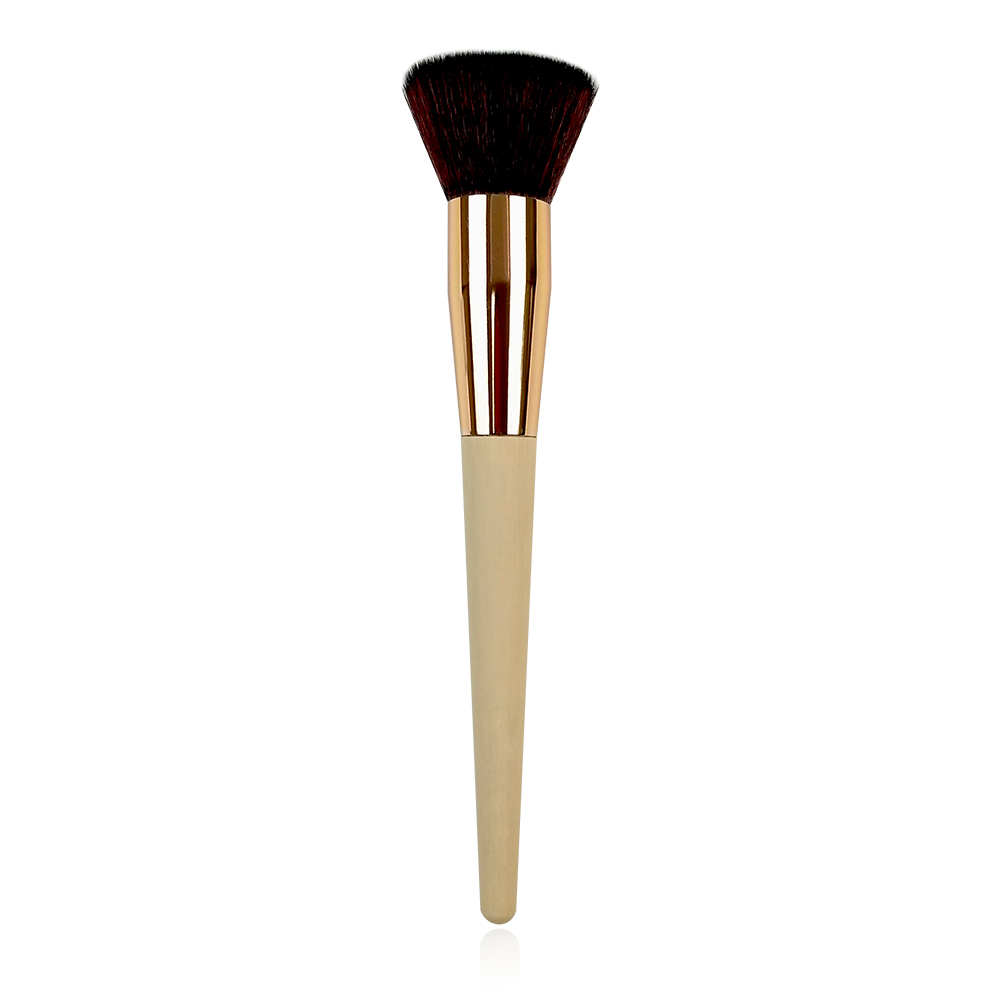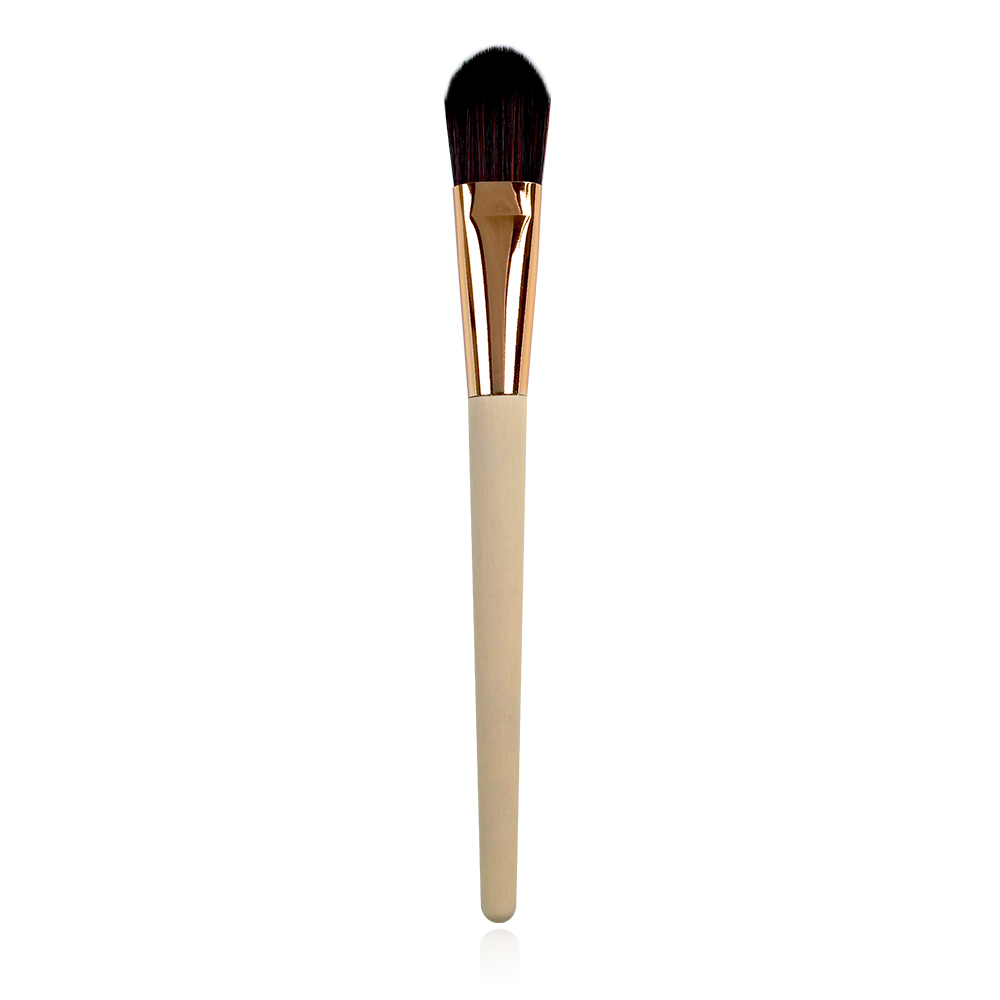UV-cured printing inks are used as green printing materials, and are favored for their instant drying, non-volatile solvents and excellent printability. It has been widely used in the printing of various substrates such as paper, wood, metal and plastics through screen printing, plain printing, letterpress printing, and gravure printing. In comparison, the use of gravure printed plastic products for UV-curing printing inks is still in the research and development stage, and its application is not as extensive as other methods. The reason is nothing but the complexity of the plastic surface properties, the special nature of the gravure printing method and the limitations of UV ink suitability. In this research project, dimer diacids, diamines, and monobasic acids were used to polycondense to obtain low-molecular-weight polyamide resins, and equimolar reaction of hydroxyethyl acrylate and diisocyanate (TDI) yielded ethyl acrylate carbamate groups. Isocyanate, then, addition reaction of a low molecular weight polyamide resin with ethyl acrylate urethane monoisocyanate to obtain a comb having a polyamide backbone as the main chain and ethyl acrylate dicarbamate as the side chain For prepolymers, this prepolymer is properly compounded with appropriate reactive diluents, photoinitiators, pigment fillers, and ink auxiliaries, and can be used in plastics (PE, PP, PS, UV, cured printing inks for PET, PA).
2 Experimental development
2.1 Synthesis of Comb Prepolymers
2.1.1 Synthetic principle
First, the dimerized fatty acid and ethylenediamine are polycondensed to obtain a polyamide. In order to obtain a low molecular weight polyamide, a monobasic acid (ricinoleic acid) must be added to lower the functionality of the reaction system, and at the same time, an appropriate amount is added to adjust the properties of the polymer. Adipic acid. The reaction equation is:
nHOOC-R1-COOH+n H2N-R2-NH2î ‡-[OC-R1-COHN-R2NH]n—+2nH2O
At the same time, toluene-2,4-diisocyanate (TDI) and hydroxyethyl acrylate (HEA) react equimolarly to react one isocyanate group of diisocyanate with the hydroxyl group of hydroxyethyl acrylate to form a carbamate to obtain acrylic acid. Isocyanate. The reaction equation is:
OCN-ph-NCO +CH2=CH-COOCH2CH2OHî ‡OCN-ph-NHCOO CH2CH2OOC-CH=CH2
Then, the low-molecular-weight polyamide and acrylic acid monoisocyanate are subjected to an addition reaction to form a comb-type prepolymer having a polyamide main chain and an acryl urethane group as a side chain. The reaction equation is:
—[OC-R1-COHN-R2NH]n— + OCN-ph-NHCOO CH2CH2OOC-CH=CH2 î ‡
—[OC-R1-COHN-R2N]n —
CH2=CHCOOCH2CH2OOCNH-ph-NHOC
2.1.2 Synthetic raw material dimer fatty acid (polymerized with cottonseed oleic acid, =2500-3500CP/25°C, Ar=195mgKOH/g, color ≤10), ricinoleic acid (Ar≥195mgKOH/g) ), adipic acid, ethylenediamine, toluene-2, 4-diisocyanate (TDI), hydroxyethyl acrylate (HEA), dibutyltin dilaurate, benzoquinone.
2.1.3 Synthesis Experiment
(1) Synthesis of low-molecular-weight polyamide resin Dimer fatty acid (60 parts), ricinoleic acid (30 parts), and adipic acid (0.5 part) were charged at once with an electric heating jacket, condensation reflux, and electric stirring. In the reactor of the negative pressure system, the nitrogen gas is opened to condense, stirring is started and the temperature is raised. When the temperature reaches 120-130°C, ethylenediamine (9.5 parts) is added dropwise. Note the acceleration and prevent the pot from spilling. After incubation at 130-135°C for 2 to 3 hours, the temperature was raised to 180°C and the reaction was maintained for 2 hours. Then, the reaction was carried out for 1 hour under negative pressure. Nitrogen gas was used to restore the pressure to normal. After the acid value and amine value were measured, the temperature was lowered. The acid value is less than 6 and the amine value is less than 6.
(2) Synthesis of acrylic acid monoisocyanate Toluene-2,4-diisocyanate (TDI) and hydroxyethyl acrylate (HEA) were equimolarly fed to the reactor having the same device as in step (1), and the reaction system was prevented from being introduced into the reactor. Water or other proton compounds, start stirring to make the system even, and then add the total amount of catalyst 0.5% dibutyltin dilaurate and 0.1% of the polymerization inhibitor p-benzoquinone, heated to 50 ~ 60 °C, insulation After 3 hours, there was no reflux in the condenser and the reaction reached the end.
(3) Synthesis of comb-type prepolymer The above-prepared acrylic acid monoisocyanate (60 parts) was charged into a reactor heated with a hot jacket, refluxed, and electrically stirred to start stirring, and the system temperature was maintained at 60C. The above synthesized low-molecular-weight polyamide resin (40 parts) was taken in a heating vessel, heated and melted, and then slowly added to the reactor, and the feed rate must be controlled so as not to overshoot the pot. After the addition is completed, the reaction is continued for 3 hours, and the material can be discharged after the isocyanate content is measured. If the viscosity of the system is too high during the reaction, HEA may be added in an appropriate amount to adjust the viscosity so as to smoothly stir and discharge the material.
2.2 Preparation of UV Links
Weigh a certain amount of comb-type prepolymer hydroxyethyl acrylate (HEA) of the above-mentioned synthetic comb preheater in an electrically heated hot-jacketed heating, condensing reflux, and electric stirring container, open the stirring and condensing, keep the temperature at 50°C, and add the total amount of 5% The trimethylolpropane triacrylate (TMPTA) was stirred well and the hydroxyethyl acrylate (HEA) was continuously added. The sample was tested to a viscosity of 100 to 200 cP/25° C., and the material was qualified to obtain the UV linking material.
2.3 Preparation of UV printing inks
2.3.1 The main raw materials
Binder: Comb prepolymer UV binder (2.2 preparative). Pigments: Color pigments are indigo, benzidine yellow, permanent red, pink, achromatic pigments are titanium dioxide (R930), high pigment carbon black. Filler: colloidal calcium carbonate. Photosensitizer: benzophenone. Adjuvant: Defoamer is R2500 (silicone acrylate), anti-wear agent is paraffin, and stabilizer is para-benzoquinone.
2.3.2 Preparation Process
Weigh 85 to 90 binders into the pre-dispersed vessel, and weigh 6 to 10 parts of the desired pigment and 3 to 4 parts of the filler according to the formula, and weigh out 0.6 parts of the photosensitizer and 0.4 parts of the The auxiliary agent is added to the pre-dispersed container which has been used to hold the binder. The mixture is agitated to wet the pigment filler powder and to initially disperse the system. The pre-dispersed material is sent to the sand mill for grinding, keeping the temperature of the grinding material below 30°C, measuring the viscosity and fineness, the viscosity is 30-35S (coating -4 cups), the fineness of 15μm or less can be discharged into the packaging .
2.3.3 Detection Methods
(1) The color is tested according to GB/T 13217.1-91.
(2) The tinting strength is tested according to GB/T 13217.6-91.
(3) Incipient dryness shall be tested in accordance with GB/T 13217.5-91 using a UV-125 curing device.
(4) Fineness Tested according to GB/T 13217.3-91.
(5) Viscosity was measured according to GB/T 13217.4-91, and a QND-4 type viscometer was used. The test temperature was 30°C.
(6) Attachment Fastness Tested according to GB/T 13217.7-91.
(7) Luster shall be tested according to GB/T 13217.2-91.
(8) Residual solvent The amount of solvent remaining in the print after 24 hours of printing was checked by gas chromatography.
This category is for Foundation Brushes. Each brush features a dense brush head perfect for applying foundation products.
The foundation brush with flat top can be used with wet or dry products and it is idea for application foundation on to the face for a full coverage finish. The densely packed bristles allow for faster and more even application. The Flat Foundation Brush with pointed tip is idea for use with cream or liquid foundations and can also be used with concealer or contouring products.


Dense Foundation Brush,Foundation Brushes,Best Foundation Brush,Foundation Brush For Liquid
SHENZHEN MERRYNICE COSMETICS CO., LTD , https://www.merrynice.com